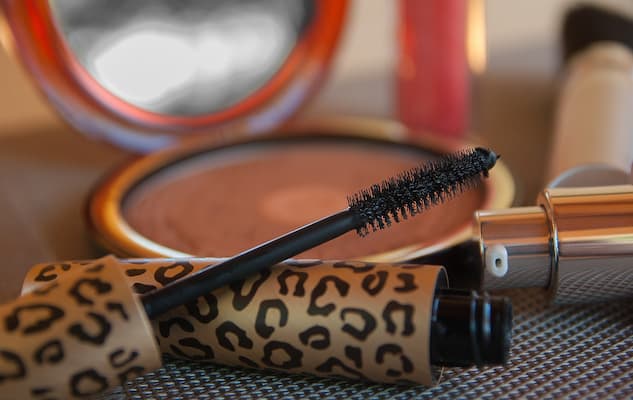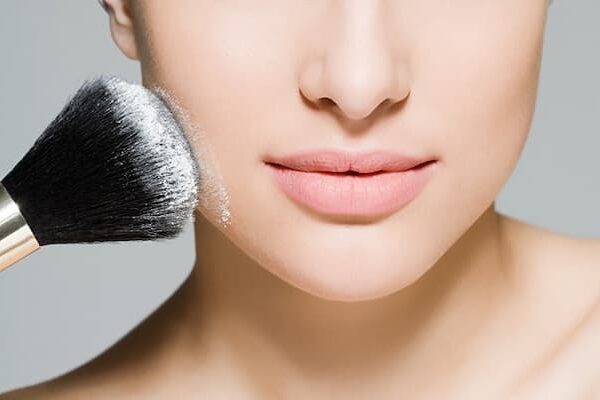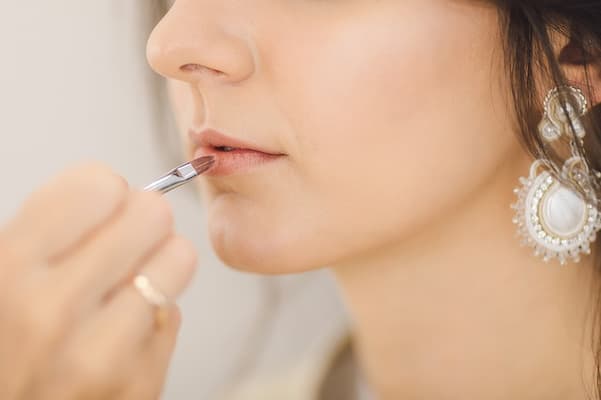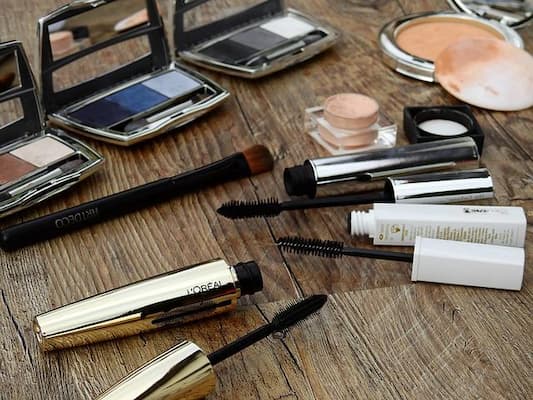Many women use mascara to give their lashes a lush appearance. Those tubes and wands have been used since the 19th century to make eyes more seductive.
Mascara is made of a pigment like carbon black or iron oxide to darken the lashes, a polymer to coat the lashes with a protective film, a preservative, and thickening oils or waxes like lanolin, mineral oil, paraffin, petrolatum, castor oil, carnauba wax, and candelilla wax.
For more specific information, keep reading.
Table of Contents
The Overview
To create a brand’s distinctive combination of ingredients, mascara is made of a mixture of oils, waxes, and preservatives. Preservatives prevent the dreaded clumping or separation, while oils and waxes are used to add consistency and color.
Mascara relies on a few major ingredients in its product:
- A pigment to darken lashes
- A film to coat lashes
- A thickening agent to thicken lashes
This formula varies slightly between brands and formulations because different companies prefer to emphasize or concentrate on different features. A volumizing mascara and a lengthening mascara, for instance, might differ slightly from one another. The main components of each mascara are, however, as follows.
Can I Forgot Mascara?
Simply put, if you don’t use mascara, your makeup is incomplete. It’s safe to say that you can use mascara in your beauty routine now that we’ve established there isn’t any bat poop in it.
Your natural eyelashes will appear longer, fuller, and darker when wearing mascara. This will give your eyes a bigger, more vibrant appearance. Some people choose to go for a natural makeup look and use just a few products, like mascara.
Your eyeliner and eyeshadow will look more vibrant if you choose to use additional eye makeup, such as mascara. There are many safe mascara options available, so you won’t have to worry about your product containing too many chemicals. Never omit this step from your beauty regimen! See more about Is It Bad To Sleep With Mascara On?
The Good
It’s important to consider the ingredients in the mascara you choose when using any kind of makeup. In addition to being a fun makeup accessory, a mascara with the right ingredients can make your lashes appear healthy.
Biotin
This component is just as crucial in mascara as the one you may be familiar with from hair serums. Your lashes’ nourishment and growth are known to be supported by biotin.
Avocado peptide and biotin are both used in Kaja Beauty’s Wink Lash Trio to help condition and enrich lashes. With each application, this mascara will enhance the appearance of your lashes.
Panthenol
Each lash is supported and protected by a panthenol seal on its surface. In the future, applying mascara will be simpler for you if you maintain healthy, conditioned lashes.
Natural Products
More and more mascaras contain ingredients that you might also find in your kitchen as more businesses switch to natural and clean products. These include beeswax for binding, cocoa powder for color, and sunflower oil to coat the lashes.
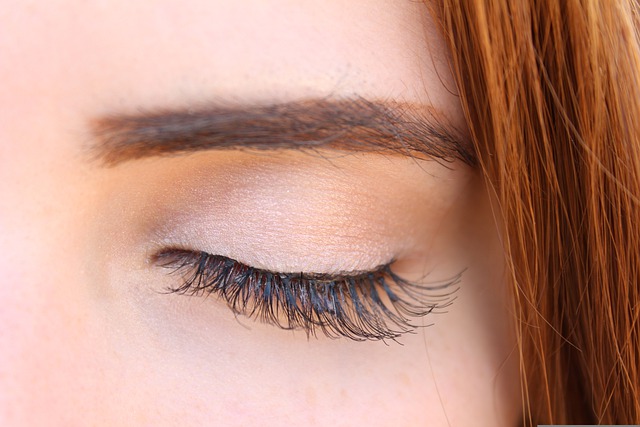
The Bad
Sadly, government regulations for cosmetics are less stringent than those for other household goods. Because of this, it’s possible that some of the ingredients in your favorite makeup could be harmful to you. It’s crucial to educate yourself about harmful ingredients and stop using these products in your daily life.
Carbon Black
Although coal tar is where carbon black also comes from, which is gross, it can be used to give mascara its dark color. You most certainly don’t want to put that on your face!
Carbon black may cause cancer and organ toxicity in addition to being made with disgusting ingredients like coal and tar. Avoiding this is definitely a good idea.
Butylated Hydroxytoluene (bht)
This preservative used in mascara is among the top three culprits for a common skin rash. To keep your skin healthy, check the ingredient list and stay away from this.
Make sure neither of these appear on the ingredient list of the mascara you like once you’ve done a quick glance at it. One mascara that won’t contain these ingredients is Kaja Beauty’s Wink Lash Trio, so you can feel great and secure about your makeup!
Animal Products
Being vegan is a personal decision, and sometimes people are unaware that it also applies to their cosmetics. Verify that your favorite mascara is vegan before committing to a life free of animal products. The following ingredients are ones to watch out for if you want to make sure your mascara is vegan.
Beeswax
Beeswax does not qualify as a vegan mascara ingredient despite being natural and free of toxic chemicals. In order to ensure that mascara adheres to the lashes and that its consistency doesn’t change, beeswax is used as a binding agent. If you want to use vegan cosmetics, stay away from beeswax mascara.
Guanine (pearl Essence)
Guanine, also known as pearl essence, is derived from fish scales and is used to give mascara and other cosmetics a glossy finish. Although this ingredient is frequently mistaken for bat poop and is considerably less disgusting than bat poop in mascara, it nonetheless results in a non-vegan product.
Eradicating The Rumors Relating To Mascara
What Is Mascara Made Of: Bat Poop
Mascara is not at all made of bat poop, and this is just a myth. No cosmetics company would consent to put feces in a product meant for your eyes. For health and safety reasons, it is obvious.
By specifically using carbon black or iron oxide rather than bat poop, mascara’s dark pigmentation is achieved. As consumers, we should always prioritize the truth over urban legends.
This article brings awareness to ‘What ingredients are in mascara?’ giving you a sigh of relief that you are using the right product.
Why Does This Myth Even Exist
Mascara’s Bat poop rumor most likely resulted from a straightforward linguistic misunderstanding. People are more curious to know ‘How is mascara made?’ because of this controversy.
Guanine is a crystalline substance that’s found in a lot of cosmetic products, including mascara, and it helps prevent products from becoming transparent or clear.
Guano is the term for bat feces. Consequently, it is clear where and why there was confusion given the similarity of the two words.
Guanine and bat guano are not the same thing.
On the other hand, fish scales are used to make the guanine used in the cosmetics industry. There may not therefore be guano in Mascara.
Does Any Makeup Contain Bat Poop?
Any other type of makeup prohibits the use of bat poop. But this poop-half-truth is more complicated than that.
There are some poop-related issues in the beauty industry. Blood facials, which inject your blood plasma into your skin to revive it, and snail slime treatments, which use the gastropod mucus of snails, are two other bizarre beauty fads.
We are happy that bat poop is not currently used in any aspect of the beauty industry.
A pigment known as guanine is found in mascara and numerous cosmetic items. This crystallized substance is found in bat feces, but the ingredient in mascara is made from fish scales. Confusion is increased by the fact that the correct term for bat feces is guano, which has a pronunciation that is somewhat similar to guanine.
Fortunately, the two of them are different, so you do not have to be concerned about poop getting into your mascara.
Conclusion
But some cosmetics and makeup can cause allergies. There are some potentially toxic, carcinogenic, or allergic ingredients in mascara.
Cosmetics must be approved by and put through testing by numerous governmental organizations around the world. Although this isn’t always the case, it lowers the likelihood of harm or negative effects.
Lacquer, ethyl acetate, and polypropylene are a few of the ingredients that are very concerning. Even though they aren’t harmful in and of themselves, ingredients like lanolin and paraffin can cause allergic reactions in some people.
Anyone with sensitive skin or eyes should use specially marked “hypoallergenic” products. Start out by using a small amount, and if there is no irritation, keep using it.
I appreciate you reading.

